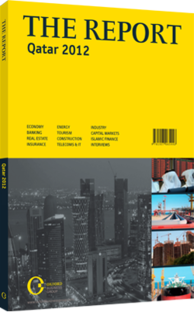OBG talks to Saleh Al Nabit, Secretary-General, General Secretariat for Development and Planning (GSDP)

Interview: Saleh Al Nabit
Which areas of the economy would you identify as ready for further liberalisation, and which do you feel need further development to support growth?
SALEH AL NABIT: I believe that all sectors have the potential to contribute to future growth. While there are factors that will cap future gas production, it is important that opportunities for extracting additional value in downstream manufacturing are exploited. There are also opportunities to develop capabilities in services’ activities linked to hydrocarbons. In the near term, infrastructure will play a larger role in stimulating growth as Qatar mobilises to deliver the assets needed to support wider social and economic development and the hosting of FIFA 2022 World Cup. The small and medium-sized enterprise sector is another area that is being increasing emphasised, supported by entities like Enterprise Qatar and the Qatar Development Bank. These initiatives need to promote greater competition in the provision of goods and services and assistance needs to be provided in a way that is sustainable and pays off.
How can Qatar attract further investment into non-hydrocarbons industries, and which segments hold the greatest opportunity for growth?
AL NABIT: As part of its broader efforts to diversify activity away from hydrocarbons, Qatar needs to attract high-tech industries. Qatar’s interest lies not so much in the finance and capital that accompany such investments, but rather in the effective transfer of technology and knowledge. There are three main areas that the state is addressing to attract increased investment to the non-hydrocarbons segment of the economy. The first is services infrastructure, such as telecommunications and transportation, which will engender a more business-friendly environment. The second area is regulations. The Ministry of Business and Trade is assessing the existing system of business legislation in its entirety to determine what influences the costs and the ease of doing business. As part of the ministry’s goal to make Qatar attractive for business on a regional and global level, regulations are being streamlined. The third area to be addressed is the fiscal regime. Qatar has a very simple and transparent fiscal regime with a low tax rate on corporate profits, which is particularly attractive to foreign investors; corporate income tax has been set for the foreseeable future, which gives investors significant predictability. However, there are elements – like indirect taxation – which may warrant discussion in the context of fiscal sustainability.
The state has no control over the prices of hydrocarbons and, of course, any fluctuations in prices will have an effect on GDP, since hydrocarbons account for approximately 60% of GDP in nominal terms. However, the share of hydrocarbons, in terms of volume, will remain unaffected. The current phase of growth for hydrocarbons industries is coming to an end, and we expect that after 2012 there will be greater growth in other sectors. In the short term this is going to be driven by such sectors as construction, which is fuelled by infrastructure investments. However, financial services and transportation will also start to increase their share of GDP, reducing that of oil and gas.
In what way does the private sector stand to benefit from the adoption of GCC-wide market policies?
AL NABIT: Companies will begin to benefit from the economies of scale brought about by a larger market and easier access to consumers. Additionally, this will bring about enhanced competition, which will ultimately benefit consumers. This will mean that the private sector in Qatar will have to strive to be more efficient while also developing much-needed experience. Companies additionally stand to gain from cross-border infrastructure, such as the GCC rail link, and this is an important complement to common trade mechanisms.
You have reached the limit of premium articles you can view for free.
Choose from the options below to purchase print or digital editions of our Reports. You can also purchase a website subscription giving you unlimited access to all of our Reports online for 12 months.
If you have already purchased this Report or have a website subscription, please login to continue.

